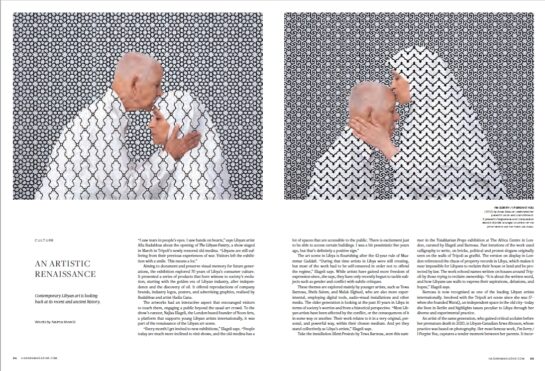
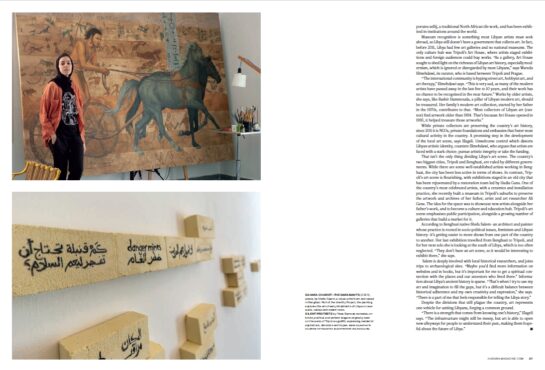
My latest story: “Contemporary Libyan art is looking back at its recent and ancient history”, has just been published on the beautiful Hadara Magazine.
I spoke with curator Najlaa Elageli, artists Tewa Barnosa, Shefa Salem and many others.


My latest story: “Contemporary Libyan art is looking back at its recent and ancient history”, has just been published on the beautiful Hadara Magazine.
I spoke with curator Najlaa Elageli, artists Tewa Barnosa, Shefa Salem and many others.
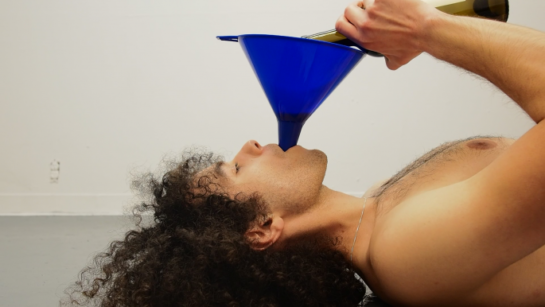
Fruits weave together ancestral longing, anchoring us to home. ‘Double Blessings’ is an exhibition in Chicago that explore this concept through the work four artists who are connected to Palestine. Their art tells stories of consumption and lineage, with food as a common but diverse language.
I have interviewed Noel Maghathe, the curator of the show, for The New Arab.
Here is the link to the article
Read More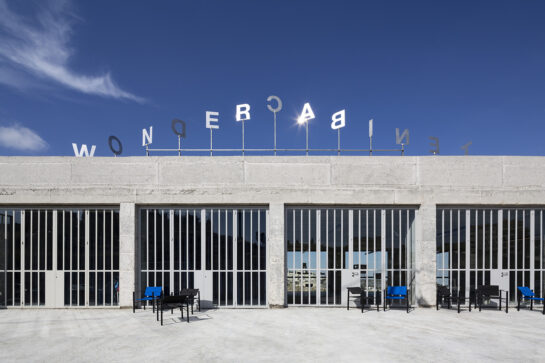
With the new art space Wonder Cabinet in Bethlehem, Palestinian architects Elias and Yousef Anastas,are recovering, treasuring and expanding the genius loci of the West Bank.
The kind of impact that the art space is hoping to have is twofold: encouraging the Palestinian art scene to grow beyond Ramallah, while also attracting creatives from around the world to Bethlehem.
I have interview them for Middle East Monitor.
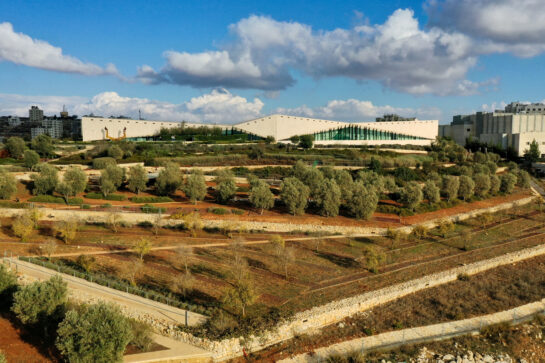
Duty and care are the words that would best describe the approach of Dr Adila Laidi-Hanieh towards the Palestinian Museum in Birzeit.
She is stepping down as director of the museum at the end of this month, and she reflected on her years in charge, changing the institution from the inside out. I have interviewed her for Middle East Monitor
Read More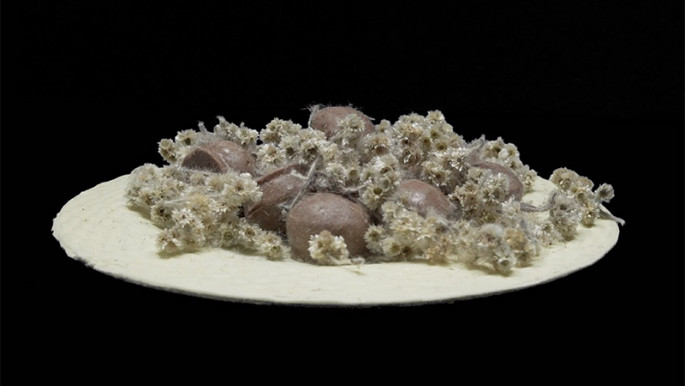
Artist Marwa Benhalim told me there is an invisible line dividing Libya. I tried to guess what it was. But of the many divisions splitting Libya in two, I wouldn’t have ever thought about this one: couscous and rice.
She explains to me that on the western side of Libya, there are semolina fields, and all the main dishes are based on couscous.
On the eastern side, it’s all rice crops, and you can find rice-based recipes: “The couscous side of Libya was influenced by commerce with Morocco and Tunisia, the other side had rice comes from Asia through Egypt. Trade stopped in the middle because there is a very large desert,” she says. “Through the food people eat, you can really understand the history of a country.”
I have interviewed the artist for The New Arab.
Read More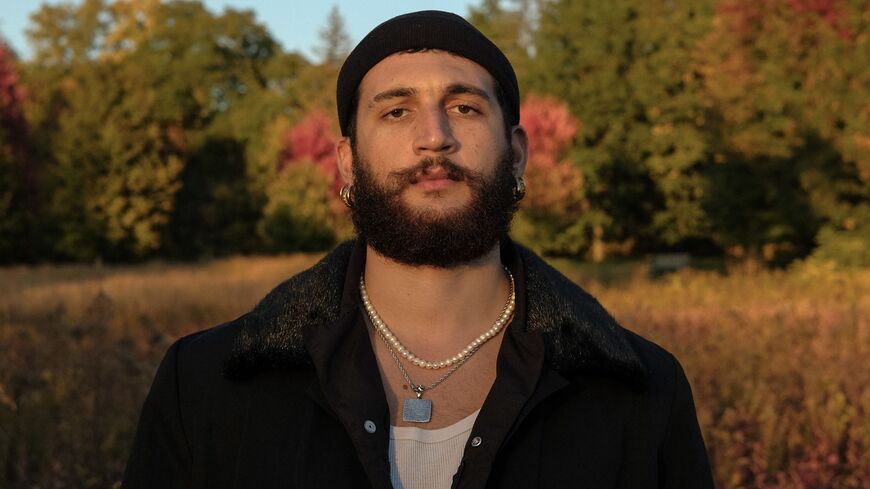
I have interviewed independent researcher, curator and artist Adam HajYahia for Al-Monitor.
Adam’s exploration of structural and hierarchical violence and its intersections with capitalist, colonial, sexual and social dynamics took material shape recently in an exhibition called “Carnal Politics: Sex, Desire and Anti-Colonial Deviance in Mandate Palestine.”
Here is the link to the article
Read More![The work of Alessandra Ferrini [Image courtesy of the artist]](https://i0.wp.com/www.middleeastmonitor.com/wp-content/uploads/2023/06/alessandra-ferrini-maxxi.jpg?resize=1200%2C630&quality=85&strip=all&zoom=1&ssl=1)
Middle East Monitor has just published my latest article titled: “Artist Alessandra Ferrini explores the complex relationship between Libya and Italy.”
The article is based on an interview with London-based Italian artist Alessandra Ferrini, who deepens the conversation around colonial and recent Libyan history, creating work about the manipulation of information, colonial memory, trauma and reparations.
Read More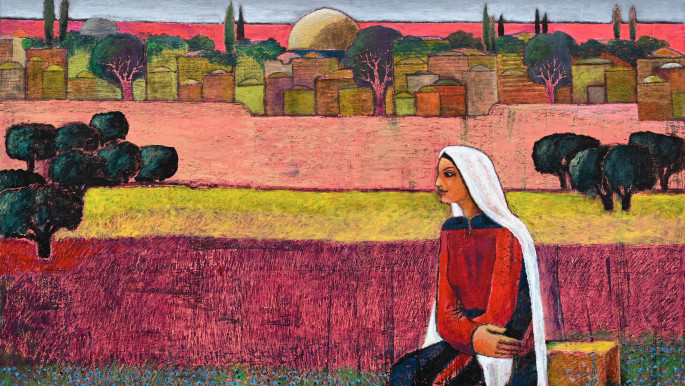
My latest piece about Nabil Anani’s new show, currently at Zawyeh Gallery, just came out for The New Arab.
Nabil is one of the founders of the contemporary Palestinian art movement. His works highlight Palestine’s folkloric culture and seek to foster national pride beyond Israel’s 75-year occupation.
Read More
Plural Art Mag has just published my interview with Balinese artist Satya Cipta. I visited her studio back in February, during my latest research trip to Indonesia, and was completely struck by the potency of her imagery.
Read More
Starting this year, Abu Dhabi is building a contemporary art scene tending to the local community, positioning itself as the main taste-maker in the discourse on the Global South in the Middle East.
I wrote a piece based on my latest trip to Abu Dhabi last month for Middle East Monitor.
Here is the link to the article
Read More
I’m writing about Libyan contemporary art once again, this time for The New Arab, a magazine I regularly read, and I’m happy to start collaborating with.
The piece is based on an interview with Libyan curator Wareda Elmehdawi, who seeks to shed light on the richness of Libyan art history through her family’s work with the historical Tripoli Art House.
Read More
My latest piece for Middle East Monitor is titled: “Saudi artist Hawazin Alotaibi rethinks gender norms and masculinity in the Gulf.”
It’s a piece of art criticism about this young artist, who doesn’t sheer away from using image distortion and experimental printing processes in order to create portrayals of male figures that contend with evolving conceptions of Arab masculinity.